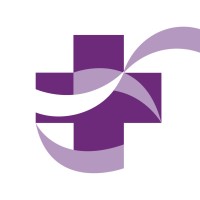
CHRISTUS Health Company Cyber Security Posture
christushealth.orgCHRISTUS Health is a Catholic not-for-profit health care system comprising more than 600 centers, including long-term care facilities, community hospitals, walk-in clinics and health ministries. We are a community of 50,000 Associates, with over 15,000 physicians providing personalized care. Our ministries extend to Texas, Louisiana, New Mexico and Arkansas, and throughout the Americas to Chile, Colombia and Mexico. We continue to expand into new communities each year, adding more physicians and more services and bringing care closer to more people. Sponsored by the Sisters of Charity of the Incarnate Word in Houston and San Antonio and the Sisters of the Holy Family of Nazareth, our mission is to extend the healing ministry of Jesus Christ to every individual we serve.
CHRISTUS Health Company Details
christus-health
26340 employees
131092.0
62
Hospitals and Health Care
christushealth.org
Scan still pending
CHR_2159625
In-progress
Between 800 and 900
This score is AI-generated and less favored by cyber insurers, who prefer the TPRM score.
 CHRISTUS Health Global Score
CHRISTUS Health Global Score.png)

CHRISTUS Health Company Scoring based on AI Models
| Model Name | Date | Description | Current Score Difference | Score |
|---|---|---|---|---|
| AVERAGE-Industry | 03-12-2025 | This score represents the average cybersecurity rating of companies already scanned within the same industry. It provides a benchmark to compare an individual company's security posture against its industry peers. | N/A | Between 800 and 900 |
CHRISTUS Health Company Cyber Security News & History
| Entity | Type | Severity | Impact | Seen | Url ID | Details | View |
|---|---|---|---|---|---|---|---|
| CHRISTUS Spohn Health System | Breach | 85 | 4 | 06/2018 | CHR17346822 | Link | |
Rankiteo Explanation : Attack with significant impact with customers data leaksDescription: CHRISTUS Spohn notified 1,800 patients about medical records being stolen. Medical records for some patients from CHRISTUS Spohn medical centers in Corpus Christi were among the items stolen from an employee. An employee was the victim of a burglary that led to the theft of their personal belongings. Among those belongings was medical information for some patients who received services from the hospital An official confirmed that around 1,800 patients who may have been impacted were being contacted regarding the incident. | |||||||
| CHRISTUS Spohn Health System | Ransomware | 100 | 5 | 07/2022 | CHR134711722 | Link | |
Rankiteo Explanation : Attack threatening the organization's existenceDescription: CHRISTUS Spohn Health System Corporation suffered a large-scale ransomware attack targeted by the AvosLocker ransomware group. The group stole patients protected health information of more than 15,000 individuals from CHRISTUS and posted it on the dark web. CHRISTUS Spohn Health System Corporation is a faith-based, not-for-profit health system based in Irving, Texas. CHRISTUS operates more than 600 centers, including long-term care facilities, community hospitals, walk-in clinics, and health ministries. | |||||||
CHRISTUS Health Company Subsidiaries

CHRISTUS Health is a Catholic not-for-profit health care system comprising more than 600 centers, including long-term care facilities, community hospitals, walk-in clinics and health ministries. We are a community of 50,000 Associates, with over 15,000 physicians providing personalized care. Our ministries extend to Texas, Louisiana, New Mexico and Arkansas, and throughout the Americas to Chile, Colombia and Mexico. We continue to expand into new communities each year, adding more physicians and more services and bringing care closer to more people. Sponsored by the Sisters of Charity of the Incarnate Word in Houston and San Antonio and the Sisters of the Holy Family of Nazareth, our mission is to extend the healing ministry of Jesus Christ to every individual we serve.
Access Data Using Our API

Get company history
.png)
CHRISTUS Health Cyber Security News
Austin Picks Seasoned City Tech Exec as Its Next CISO
Brian Gardner has been named the new chief information security officer for the city of Austin. His appointment comes just three months after ...
HIMSS launches veterans health IT workforce program
The new workforce development program is aimed at helping veterans start careers in health and health IT, a HIMSS spokesperson said. The ...
AvosLocker Claims Data Theft From Another Healthcare Entity
AvosLocker claims to be behind an attack allegedly involving data theft from Texas-based CHRISTUS Health, which operates hundreds of healthcare facilities.
Chair File: Leadership Dialogue — Accelerating Health Equity with Marcos Pesquera of CHRISTUS Health
Marcos and I discuss how hospitals and health systems can integrate and align diversity and inclusion strategies to achieve health equity, ...
Dallas-based Christus Health experienced unauthorized activity on its computer network
A Dallas-based Catholic, not-for-profit medical system has experienced a ransomware attack that it says did not affect any private patient ...
CHRISTUS Spohn Health System Corporation Files Notice of Data Breach in the Wake of Apparent Ransomware Attack
On July 1, 2022, CHRISTUS Spohn Health System Corporation (“CHRISTUS”) filed an official notice of a data breach with the U.S. Department of ...
Cyberattacks pivot from large health systems to smaller hospitals, specialty clinics
Smaller hospital systems and specialty clinics are rising to the top of those affected by hacking or IT incident breaches. Breaches associated ...
Hackers shifting focus to small hospitals, clinics and tech companies to siphon off patient data, report finds
Hackers have pivoted their focus from large healthcare systems to smaller hospitals and specialty clinics and third-party vendors.
Patients receive letter informing of data breach from Christus Spohn Health System
Christus Spohn Health System has been hit with a cybersecurity breach resulting in personal and sensitive information being stolen from their patients.

CHRISTUS Health Similar Companies
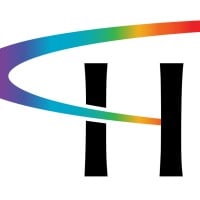
Highmark Health
A national blended health organization, Highmark Health and our leading businesses support millions of customers with products, services and solutions closely aligned to our mission of creating remarkable health experiences, freeing people to be their best. Headquartered in Pittsburgh, we're region

Region Skåne
Region Skåne, or Skåne Regional Council, is the self-governing authority of Skåne, the southernmost county of Sweden. Region Skåne has its head office in the city of Kristianstad and has work places in every municipality in Skåne. Region Skåne is responsible for healthcare and medical services, t

Southern Cross Health Care
Southern Cross is the leading provider of Care Homes in the UK, with over 730 care homes and 37,000 beds nationwide. We offer a range of care services, including Nursing, Residential and Dementia Care. The company consists of three separate divisions; Southern Cross Healthcare, Ashbourne Senior Livi
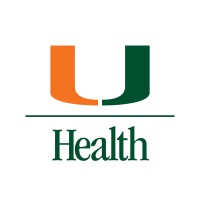
University of Miami Health System
UHealth – University of Miami Health System delivers leading-edge patient care by top-ranked physicians who treat some of the most complex cases. Powered by the Miller School of Medicine’s ground-breaking research and medical education, UHealth is the region’s only academic-based health care system.
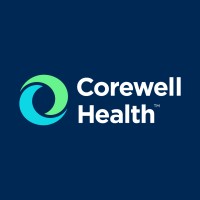
Corewell Health
People are at the heart of everything we do, and the inspiration for our legacy of outstanding outcomes, innovation, strong community partnerships, philanthropy and transparency. Corewell Health is a not-for-profit health system that provides health care and coverage with an exceptional team of 65,0
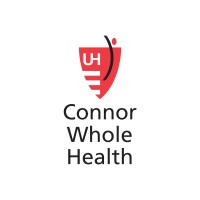
University Hospitals Connor Integrative Health Network
Integrative Medicine (IM) is an approach to healthcare that takes into account the whole person addressing the full range of physical, emotional, mental, social, spiritual, and environmental influences that affect an individual’s health. IM is informed by evidence, makes use of all appropriate thera

Frequently Asked Questions (FAQ) on Cybersecurity Incidents
CHRISTUS Health CyberSecurity History Information
Total Incidents: According to Rankiteo, CHRISTUS Health has faced 2 incidents in the past.
Incident Types: The types of cybersecurity incidents that have occurred include ['Ransomware', 'Breach'].
Total Financial Loss: The total financial loss from these incidents is estimated to be {total_financial_loss}.
Cybersecurity Posture: The company's overall cybersecurity posture is described as CHRISTUS Health is a Catholic not-for-profit health care system comprising more than 600 centers, including long-term care facilities, community hospitals, walk-in clinics and health ministries. We are a community of 50,000 Associates, with over 15,000 physicians providing personalized care. Our ministries extend to Texas, Louisiana, New Mexico and Arkansas, and throughout the Americas to Chile, Colombia and Mexico. We continue to expand into new communities each year, adding more physicians and more services and bringing care closer to more people. Sponsored by the Sisters of Charity of the Incarnate Word in Houston and San Antonio and the Sisters of the Holy Family of Nazareth, our mission is to extend the healing ministry of Jesus Christ to every individual we serve..
Detection and Response: The company detects and responds to cybersecurity incidents through {description_of_detection_and_response_process}.
Incident Details
Incident 1: Ransomware Attack
Title: {Incident_Title}
Description: {Brief_description_of_the_incident}
Date Detected: {Detection_Date}
Date Publicly Disclosed: {Disclosure_Date}
Date Resolved: {Resolution_Date}
Type: {Type_of_Attack}
Attack Vector: {Attack_Vector}
Vulnerability Exploited: {Vulnerability}
Threat Actor: {Threat_Actor}
Motivation: {Motivation}
Incident 2: Data Breach
Title: {Incident_Title}
Description: {Brief_description_of_the_incident}
Date Detected: {Detection_Date}
Date Publicly Disclosed: {Disclosure_Date}
Date Resolved: {Resolution_Date}
Type: {Type_of_Attack}
Attack Vector: {Attack_Vector}
Vulnerability Exploited: {Vulnerability}
Threat Actor: {Threat_Actor}
Motivation: {Motivation}
Common Attack Types: As of now, the company has not encountered any reported incidents involving common cyberattacks.
Identification of Attack Vectors: The company identifies the attack vectors used in incidents through {description_of_identification_process}.
Impact of the Incidents
Incident 1: Ransomware Attack
Financial Loss: {Financial_Loss}
Data Compromised: {Data_Compromised}
Systems Affected: {Systems_Affected}
Downtime: {Downtime}
Operational Impact: {Operational_Impact}
Conversion Rate Impact: {Conversion_Rate_Impact}
Revenue Loss: {Revenue_Loss}
Customer Complaints: {Customer_Complaints}
Brand Reputation Impact: {Brand_Reputation_Impact}
Legal Liabilities: {Legal_Liabilities}
Identity Theft Risk: {Identity_Theft_Risk}
Payment Information Risk: {Payment_Information_Risk}
Incident 2: Data Breach
Financial Loss: {Financial_Loss}
Data Compromised: {Data_Compromised}
Systems Affected: {Systems_Affected}
Downtime: {Downtime}
Operational Impact: {Operational_Impact}
Conversion Rate Impact: {Conversion_Rate_Impact}
Revenue Loss: {Revenue_Loss}
Customer Complaints: {Customer_Complaints}
Brand Reputation Impact: {Brand_Reputation_Impact}
Legal Liabilities: {Legal_Liabilities}
Identity Theft Risk: {Identity_Theft_Risk}
Payment Information Risk: {Payment_Information_Risk}
Average Financial Loss: The average financial loss per incident is {average_financial_loss}.
Commonly Compromised Data Types: The types of data most commonly compromised in incidents are {list_of_commonly_compromised_data_types}.
Incident 1: Ransomware Attack
Entity Name: {Entity_Name}
Entity Type: {Entity_Type}
Industry: {Industry}
Location: {Location}
Size: {Size}
Customers Affected: {Customers_Affected}
Incident 2: Data Breach
Entity Name: {Entity_Name}
Entity Type: {Entity_Type}
Industry: {Industry}
Location: {Location}
Size: {Size}
Customers Affected: {Customers_Affected}
Response to the Incidents
Incident 1: Ransomware Attack
Incident Response Plan Activated: {Yes/No}
Third Party Assistance: {Yes/No}
Law Enforcement Notified: {Yes/No}
Containment Measures: {Containment_Measures}
Remediation Measures: {Remediation_Measures}
Recovery Measures: {Recovery_Measures}
Communication Strategy: {Communication_Strategy}
Adaptive Behavioral WAF: {Adaptive_Behavioral_WAF}
On-Demand Scrubbing Services: {On_Demand_Scrubbing_Services}
Network Segmentation: {Network_Segmentation}
Enhanced Monitoring: {Enhanced_Monitoring}
Incident 2: Data Breach
Incident Response Plan Activated: {Yes/No}
Third Party Assistance: {Yes/No}
Law Enforcement Notified: {Yes/No}
Containment Measures: {Containment_Measures}
Remediation Measures: {Remediation_Measures}
Recovery Measures: {Recovery_Measures}
Communication Strategy: {Communication_Strategy}
Adaptive Behavioral WAF: {Adaptive_Behavioral_WAF}
On-Demand Scrubbing Services: {On_Demand_Scrubbing_Services}
Network Segmentation: {Network_Segmentation}
Enhanced Monitoring: {Enhanced_Monitoring}
Incident Response Plan: The company's incident response plan is described as {description_of_incident_response_plan}.
Third-Party Assistance: The company involves third-party assistance in incident response through {description_of_third_party_involvement}.
Data Breach Information
Incident 2: Data Breach
Type of Data Compromised: {Type_of_Data}
Number of Records Exposed: {Number_of_Records}
Sensitivity of Data: {Sensitivity_of_Data}
Data Exfiltration: {Yes/No}
Data Encryption: {Yes/No}
File Types Exposed: {File_Types}
Personally Identifiable Information: {Yes/No}
Prevention of Data Exfiltration: The company takes the following measures to prevent data exfiltration: {description_of_prevention_measures}.
Handling of PII Incidents: The company handles incidents involving personally identifiable information (PII) through {description_of_handling_process}.
Ransomware Information
Incident 1: Ransomware Attack
Ransom Demanded: {Ransom_Amount}
Ransom Paid: {Ransom_Paid}
Ransomware Strain: {Ransomware_Strain}
Data Encryption: {Yes/No}
Data Exfiltration: {Yes/No}
Ransom Payment Policy: The company's policy on paying ransoms in ransomware incidents is described as {description_of_ransom_payment_policy}.
Data Recovery from Ransomware: The company recovers data encrypted by ransomware through {description_of_data_recovery_process}.
Regulatory Compliance
Incident 1: Ransomware Attack
Regulations Violated: {Regulations_Violated}
Fines Imposed: {Fines_Imposed}
Legal Actions: {Legal_Actions}
Regulatory Notifications: {Regulatory_Notifications}
Incident 2: Data Breach
Regulations Violated: {Regulations_Violated}
Fines Imposed: {Fines_Imposed}
Legal Actions: {Legal_Actions}
Regulatory Notifications: {Regulatory_Notifications}
Regulatory Frameworks: The company complies with the following regulatory frameworks regarding cybersecurity: {list_of_regulatory_frameworks}.
Ensuring Regulatory Compliance: The company ensures compliance with regulatory requirements through {description_of_compliance_measures}.
Lessons Learned and Recommendations
Incident 1: Ransomware Attack
Lessons Learned: {Lessons_Learned}
Incident 2: Data Breach
Lessons Learned: {Lessons_Learned}
Incident 1: Ransomware Attack
Recommendations: {Recommendations}
Incident 2: Data Breach
Recommendations: {Recommendations}
Key Lessons Learned: The key lessons learned from past incidents are {list_of_key_lessons_learned}.
Implemented Recommendations: The company has implemented the following recommendations to improve cybersecurity: {list_of_implemented_recommendations}.
References
Additional Resources: Stakeholders can find additional resources on cybersecurity best practices at {list_of_additional_resources}.
Investigation Status
Incident 1: Ransomware Attack
Investigation Status: {Investigation_Status}
Incident 2: Data Breach
Investigation Status: {Investigation_Status}
Communication of Investigation Status: The company communicates the status of incident investigations to stakeholders through {description_of_communication_process}.
Stakeholder and Customer Advisories
Incident 1: Ransomware Attack
Stakeholder Advisories: {Stakeholder_Advisories}
Customer Advisories: {Customer_Advisories}
Incident 2: Data Breach
Stakeholder Advisories: {Stakeholder_Advisories}
Customer Advisories: {Customer_Advisories}
Advisories Provided: The company provides the following advisories to stakeholders and customers following an incident: {description_of_advisories_provided}.
Initial Access Broker
Incident 1: Ransomware Attack
Entry Point: {Entry_Point}
Reconnaissance Period: {Reconnaissance_Period}
Backdoors Established: {Backdoors_Established}
High Value Targets: {High_Value_Targets}
Data Sold on Dark Web: {Yes/No}
Incident 2: Data Breach
Entry Point: {Entry_Point}
Reconnaissance Period: {Reconnaissance_Period}
Backdoors Established: {Backdoors_Established}
High Value Targets: {High_Value_Targets}
Data Sold on Dark Web: {Yes/No}
Monitoring and Mitigation of Initial Access Brokers: The company monitors and mitigates the activities of initial access brokers through {description_of_monitoring_and_mitigation_measures}.
Post-Incident Analysis
Incident 1: Ransomware Attack
Root Causes: {Root_Causes}
Corrective Actions: {Corrective_Actions}
Incident 2: Data Breach
Root Causes: {Root_Causes}
Corrective Actions: {Corrective_Actions}
Post-Incident Analysis Process: The company's process for conducting post-incident analysis is described as {description_of_post_incident_analysis_process}.
Corrective Actions Taken: The company has taken the following corrective actions based on post-incident analysis: {list_of_corrective_actions_taken}.
Additional Questions
General Information
Ransom Payment History: The company has {paid/not_paid} ransoms in the past.
Last Ransom Demanded: The amount of the last ransom demanded was {last_ransom_amount}.
Last Attacking Group: The attacking group in the last incident was {last_attacking_group}.
Incident Details
Most Recent Incident Detected: The most recent incident detected was on {most_recent_incident_detected_date}.
Most Recent Incident Publicly Disclosed: The most recent incident publicly disclosed was on {most_recent_incident_publicly_disclosed_date}.
Most Recent Incident Resolved: The most recent incident resolved was on {most_recent_incident_resolved_date}.
Impact of the Incidents
Highest Financial Loss: The highest financial loss from an incident was {highest_financial_loss}.
Most Significant Data Compromised: The most significant data compromised in an incident was {most_significant_data_compromised}.
Most Significant System Affected: The most significant system affected in an incident was {most_significant_system_affected}.
Response to the Incidents
Third-Party Assistance in Most Recent Incident: The third-party assistance involved in the most recent incident was {third_party_assistance_in_most_recent_incident}.
Containment Measures in Most Recent Incident: The containment measures taken in the most recent incident were {containment_measures_in_most_recent_incident}.
Data Breach Information
Most Sensitive Data Compromised: The most sensitive data compromised in a breach was {most_sensitive_data_compromised}.
Number of Records Exposed: The number of records exposed in the most significant breach was {number_of_records_exposed}.
Ransomware Information
Highest Ransom Demanded: The highest ransom demanded in a ransomware incident was {highest_ransom_demanded}.
Highest Ransom Paid: The highest ransom paid in a ransomware incident was {highest_ransom_paid}.
Regulatory Compliance
Highest Fine Imposed: The highest fine imposed for a regulatory violation was {highest_fine_imposed}.
Most Significant Legal Action: The most significant legal action taken for a regulatory violation was {most_significant_legal_action}.
Lessons Learned and Recommendations
Most Significant Lesson Learned: The most significant lesson learned from past incidents was {most_significant_lesson_learned}.
Most Significant Recommendation Implemented: The most significant recommendation implemented to improve cybersecurity was {most_significant_recommendation_implemented}.
References
Most Recent Source: The most recent source of information about an incident is {most_recent_source}.
Most Recent URL for Additional Resources: The most recent URL for additional resources on cybersecurity best practices is {most_recent_url}.
Investigation Status
Current Status of Most Recent Investigation: The current status of the most recent investigation is {current_status_of_most_recent_investigation}.
Stakeholder and Customer Advisories
Most Recent Stakeholder Advisory: The most recent stakeholder advisory issued was {most_recent_stakeholder_advisory}.
Most Recent Customer Advisory: The most recent customer advisory issued was {most_recent_customer_advisory}.
Initial Access Broker
Most Recent Entry Point: The most recent entry point used by an initial access broker was {most_recent_entry_point}.
Most Recent Reconnaissance Period: The most recent reconnaissance period for an incident was {most_recent_reconnaissance_period}.
Post-Incident Analysis
Most Significant Root Cause: The most significant root cause identified in post-incident analysis was {most_significant_root_cause}.
Most Significant Corrective Action: The most significant corrective action taken based on post-incident analysis was {most_significant_corrective_action}.
What Do We Measure?
















Every week, Rankiteo analyzes billions of signals to give organizations a sharper, faster view of emerging risks. With deeper, more actionable intelligence at their fingertips, security teams can outpace threat actors, respond instantly to Zero-Day attacks, and dramatically shrink their risk exposure window.
These are some of the factors we use to calculate the overall score:
Identify exposed access points, detect misconfigured SSL certificates, and uncover vulnerabilities across the network infrastructure.
Gain visibility into the software components used within an organization to detect vulnerabilities, manage risk, and ensure supply chain security.
Monitor and manage all IT assets and their configurations to ensure accurate, real-time visibility across the company's technology environment.
Leverage real-time insights on active threats, malware campaigns, and emerging vulnerabilities to proactively defend against evolving cyberattacks.




